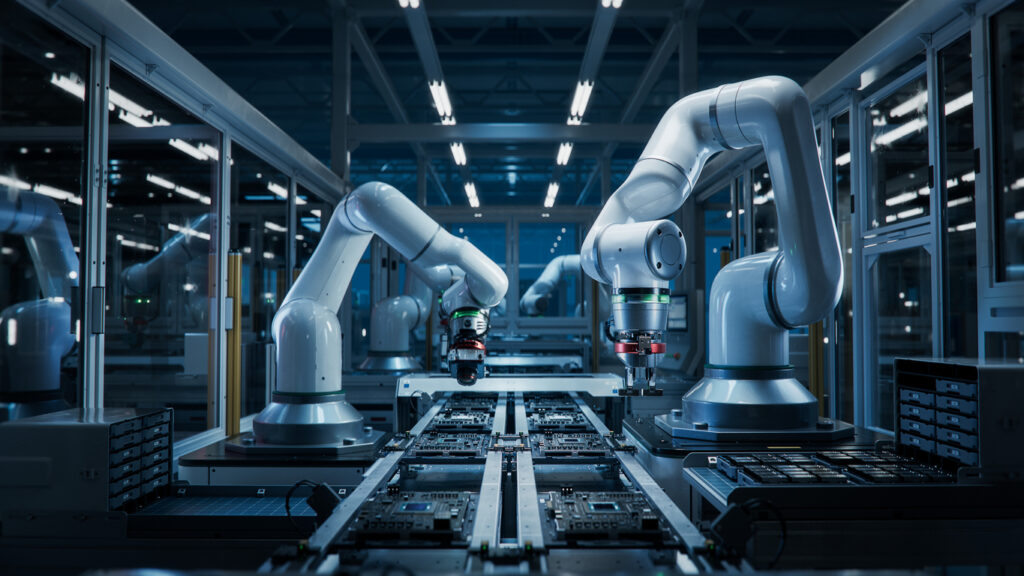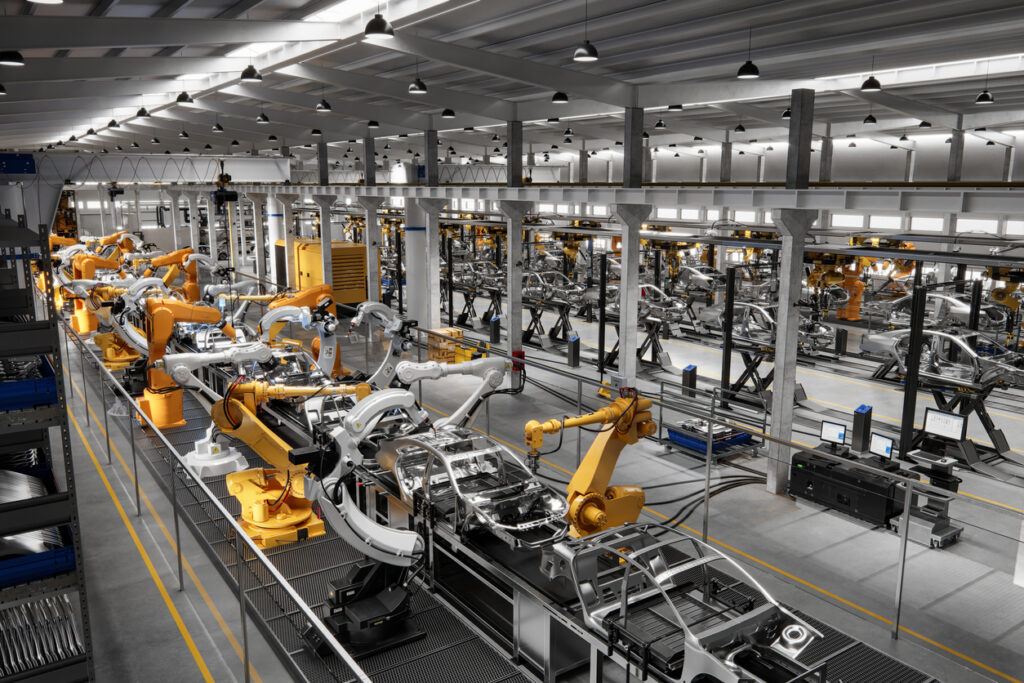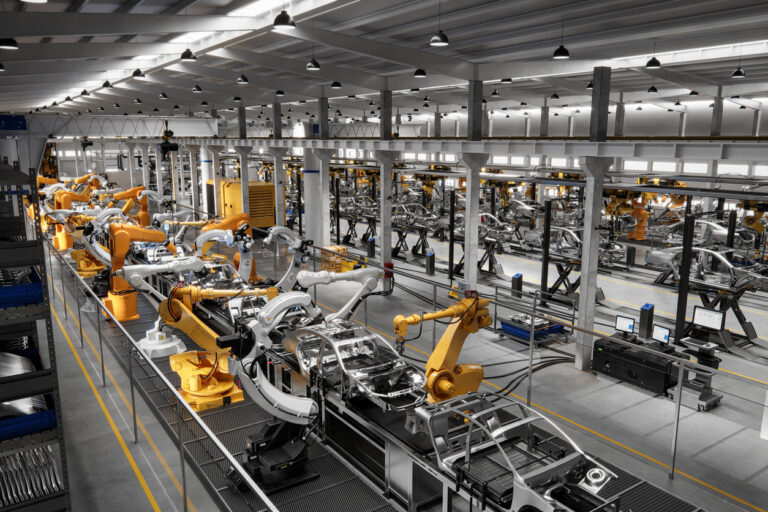A brighter collaborative and inclusive progress for humanity?
When we think about the future of humanity and life as we know it, we imminently draw associations with the sci-fi concepts from movies, where robots and automation are an inseparable part of daily life. The topic of robots, their current development and their future is one of the most trending, discussed, and controversial subjects. Given the rapid evolution of AI and robotics, we can witness people from all walks of life passionately debating on the topic whether robots will help reshape and improve the quality of life, or they will push humans from their jobs and activities, making us redundant and useless, just like an old, deprecated technology.

Some even go further. Envision a dark dystopian future. Robots take over the planet, depriving humans of normal existence. Despite the possibilities for humans and robots in the future, we are still far away from any radical alterations in the way life is currently organized. The chances of potential takeover of robots or artificial intelligence are distant enough to provide relief for humanity and to allow us to contemplate with excitement the positive applications of robots in our daily life, businesses, and industries.
Promising prospects for humanity
The future of robotics, underpinned by advancements in Artificial Intelligence (AI) and Machine Learning (ML), holds promising prospects for humanity. This progress is anticipated to be collaborative and inclusive, fostering a synergy between humans and robots.
Experts predict that robots will become more ubiquitous, permeating various industries and facets of our lives. From precision farming to driving with autonomous vehicles, robotics will revolutionize how we operate.
Advancements in computer vision and conversational AI are expected to enhance human-to-robot interactions. Simultaneously, data collection capabilities could yield more efficient fleet of robots deployments in industrial settings.
The use of AI models will enable robots to perform specific tasks more efficiently, learn from their experiences, and interact more intuitively with the real world. This will be especially transformative in sectors like healthcare, manufacturing, and logistics, among others.
Looking back at robots
Robots proved to be different from the sci-fi vision in movies, books, etc. Also, sci-fi scenarios didn’t quite envision the exact pace at which these emerging technologies develop and evolve. We still can’t order a robo-taxi with a blink of an eye, not can we sit back and relax all day long, leaving robots to do our duties, jobs, and domestic chores.
The most distant concept, related to what we now associate with a robot, can be traced back to the distant past. Around 700 B.C., in the ancient myth of Talos by Hesiod, Talos is depicted as a colossal bronze man. He is the creation of Hephaestus, who is the Greek god of blacksmiths and inventors.
The actual origin of the word “robot” is quite interesting. The word is first introduced by the Czech novelist and playwright Karel Čapek in 1920 in his play R.U.R. (Rossum’s Universal Robots). The root of the word derives from the Slavic word “robota”, meaning “forced labor”, “vassalage,” or “hard labor”. The term serves to describe the principles of the vassalage in Europe in the past. The rural population was forced to pay for their homes and the right to cultivate the land with forced labor. In Čapek’s play, a company manages to create artificial skillful creatures without soul, who are capable of everything. These beings are used to perform all the work, which humans don’t want to do, until, at the end of the play, these artificial workers rebel against their human creators and eventually kill all humans. Then, these robotic creatures realize that they don’t have the knowledge on how to manufacture more robots, as only the humans possess this information. The final act of the play features a deus ex machina spark in two robots, who walk to the sunset to create a better world again.
While this scenario sounds frightening, we are currently witnessing historical changes in the way we work, collaborate and live, thanks to different types of robots. Robots can be grouped into several types or categories, depending on their usage, design, application, and appearance or industry usage.
What types of robots are put to work?

Autonomous Robots
These robots have their name, due to their main characteristic – autonomy. Autonomous robots (also called Autonomous Mobile Robots {AMRs}) are able to perform tasks and take independent decisions without human intervention. They are equipped with advanced systems to correctly perceive their surroundings and analyze their environment.
Humanoid Robots
Humanoid robots or androids are designed to resemble humans, often having abilities for facial expressions for maximum similarity. They are built using most of the features of the AMRs, with additional and more complex technologies and functions. Humanoid robots are best suited to perform duties which encompass working with humans, for example in the service sector. The most popular and complex humanoids are Sophia and Ameca.
Pre-programmed Robots
Robots in this category are only able to complete a pre-programmed set of tasks. Such robots are most suited for repetitive tasks, which don’t require autonomous decision-making and analysis of factors.
Software Bots
Software bots are not actually real robots. Instead, these bots are programs/applications running certain code to perform particular tasks without human intervention.
Teleoperated Robots
These robots are operated remotely by humans and are most used for high-risk scenarios and dangerous or hazardous environments. Automated Guided Vehicles (AGVs) are a sub-set of this category. AGVs use pre-defined paths, or are operated, to perform tasks in pre-defined and limited environments.
Articulated Robots
These robots are designed to mimic the functions and movements of a human hand – the popular robotic arms. Robotic arms can perform a wide range of precise activities and have vast applications in many industries – factories, warehouses, storages, even in space.
Augmenting Robots
As their name suggests, these robots are integrated into the body and are designed to amplify certain human abilities or to provide specific abilities, for example in cases of missing limbs.
Cobots
Cobots (collaborative robots) are designed to complement humans at work, sharing the same working space. These robots are used to help employees in direct interaction with their daily duties.
Hybrid Robots
Hybrid robots combine robotic and biological components to form a cybernetic system. These robots are mostly used to study biological principles and to undertake neurological and reverse-engineering experiments.
Xenobots
Xenobots are real “living robots”. These particular robots have the ability to self-replicate. They are synthetic lifeforms and living nanobots, and are currently being used for scientific purposes, such as studying how cells replicate and how tissues regenerate. This category of robots present great hope for scientists to aid in understanding in more depth the biological processes and systems in the complex human organism. These robots are expected to be used in regenerative medicine.
Soft Robots
Soft robots are designed to emulate the physical characteristics of living organisms. These robots use flexible structures, such as flexible polymers, hydrogel and other stretchable materials, to better imitate the movement of living beings. These robots are mainly used in healthcare.
Additionally, robots can be categorized based on their industry application. Based on these criteria, robots can be classified as robots for logistics, healthcare, manufacturing, homelife, entertainment, space, travel, military, customer service, etc.
Swarm Robot
A swarm robot is a specific multi-robot system. Its main characteristic is that it is self-organized and decentralized. Such system has guiding principles. Robots in a swarm only use local information. No single robot is in command of the rest. Each robot is self-controlled, while being part of the swarm. Swarm robotics (SR) presents benefits, such as redundancy, adaptability, robustness, and scalability. Swarm robots are used in agriculture, military, space exploration and their primary advantage is the ability to cooperate and induce collective behavior through interaction.
Discovering new horizons
The current stage of adoption and application of robotics in our daily life, industries, and businesses, clearly annotates that there is a bright and promising future for artificial intelligence for robotics in our society. The complexity of the topic requires deeper understanding of the underlying factors, risks, and implications of welcoming robots in all aspects of our lives. With the rapid development of AI and machine learning technologies, robot simulation, programming and modelling opened up a new horizon. This, along with the potential alterations and shifts in life, as we know it, should be foreseen and addressed accordingly.
The future of robotics is intrinsically linked with advances in AI and ML. These technologies will drive the evolution of robots, making them more autonomous and capable of complex tasks.
Generative AI, a branch of machine learning, will significantly enhance robot vision, enabling robots to better understand and interact with their environment. This could revolutionize sectors like manufacturing and logistics, where robust object detection and image segmentation are critical.
Additionally, the integration of Augmented Reality (AR) and AI will broaden the scope of robotic applications, creating a synergy that could lead to the development of more intelligent and adaptable robots.
However, as robots become more prevalent, it’s crucial to consider the social and economic implications. The World Economic Forum predicts that AI and robotics could create 12 million more jobs than they eliminate by 2025, transforming the landscape of work.
New technologies such as lidar sensors and advanced computer vision techniques will continue to shape the future of robotics, enabling robots to better navigate and understand the world around them. However, it’s important to remember that these advances also come with challenges and risks. As we continue to integrate robots into our lives, it’s crucial to address these issues responsibly and ethically.
Look for the next blog on the future of robotics, including trends and industry advancements.
About the author:
https://www.linkedin.com/in/elitsa-krumova/; https://elitsakrumova.com/
Follow on Twitter: @Eli_Krumova

